If you have found mice droppings in your home or heard them scurrying around at night, then you have probably wondered if you have a mouse infestation. The next question that comes to mind, in that case, is how many mice are in my house? We’ll show you how to find out.
Yet, the truth is that the best you can do in most cases is an estimate based on certain factors; there’s no way of knowing precisely how many mice live in an area. Nevertheless, we’ll show you a few ways that you can determine if you have a few mice or you have a severe infestation lurking in your home.
Look at the Number of Droppings
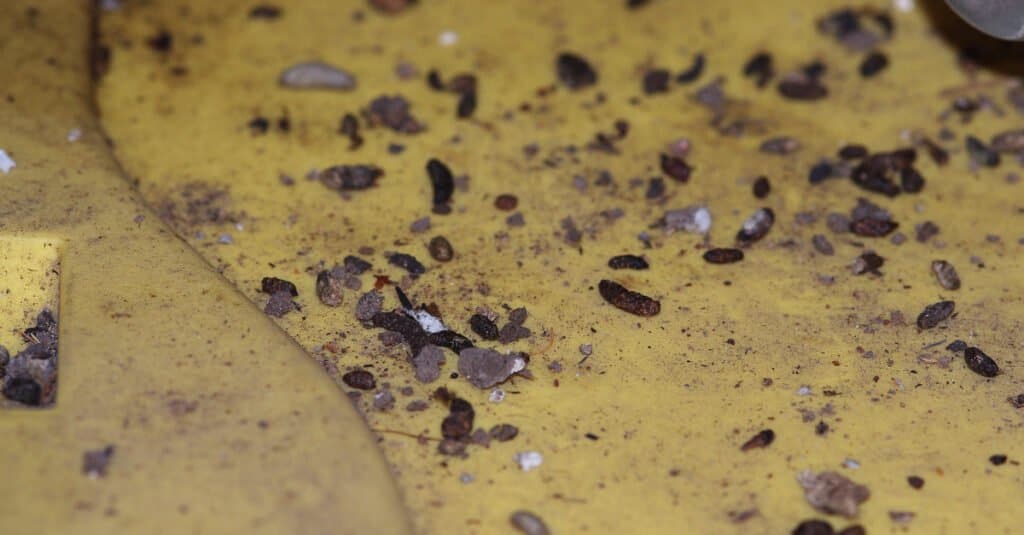
Mouse poop is an obvious sign of an infestation.
©Photo – TMD/Shutterstock.com
Mice leave behind some undeniable signs that they’re in your home. Among them are droppings and urine. A mouse can leave behind anywhere between 50 and 75 pellets per day as a single creature. You’re not going to sit around and count them, though.
You’ll have to estimate the number of droppings, but if you see large mounds of them, then you know that it’s not just a single mouse. Mice tend to defecate while they’re eating and even while they’re moving. If you see a large number of feces in an area of your home and trailing away, you could use that to find another piece of evidence about the number of mice in your house.
Specifically, you can follow the mouse droppings all the way back to their home. You can also see what areas you need to set traps in to catch them.
Follow Your Nose

Mice leave behind many signs of their existence, including smells.
©iStock.com/Flore Sakowski
For better or worse, the more mice there are in your home, the worse it will smell. You may not notice a single mouse in your home. So, if you see a single mouse in your house and don’t notice a ton of droppings or smell any overpowering odor, you may have one or two rodents in your home.
However, you need to pay attention to odors, the presence of feces, and the streaks of urine that mice leave behind in their wake. While the droppings don’t smell, the urine will leave a stale, ammonia-ridden smell in your home. If you open a cabinet or walk into your basement and the smell hits you in the face, the chances are you have multiple mice in your house.
You also need to keep your nose open for the smell of mice that have passed away. They are short-lived creatures, after all. The smell of a rotting animal is pungent and obvious, even if their bodies are small.
Following bad smells in your house can also lead you to where mice have died or even to where they are nesting. Of course, nests are another clear sign of a mouse infestation.
Hunt for Nests
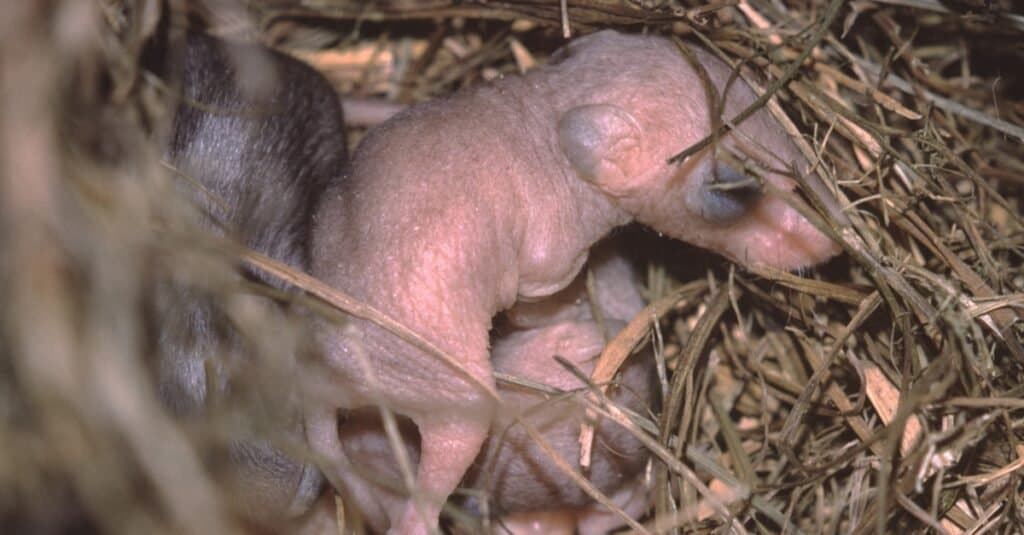
Mice nests are small and made from whatever soft materials are available.
©Liz Weber/Shutterstock.com
The number of mouse nests in your home is a clear way to show determine how many mice are in your home. Identifying a mouse nest is not that difficult. Mouse nests are small and circular, and they tend to be anywhere between 3 and 6 inches in diameter.
Mouse nests are made from a variety of materials, but the materials change based on their location. For example, if you find a mouse nest in a farm field, it will primarily use grassy materials. In a home setting, mice will scavenge for paper products like paper towels or toilet paper. They’ll also use carpet fibers, lint, cotton, and materials from your bedding and furniture.
That means mouse nests are usually bushy and soft, capable of being laid down in various settings where mice feel safe.
Mouse nests usually contain about five mice or more. They’re used to keep warm as well as to raise young. You’ll usually find nests in hidden places, such as:
- Basements
- Attics
- Inside wall gaps
- Drawers
- Cabinets
- Ceilings
Finding multiple active nests means that you have more than a single mouse in your house. In fact, you may be on the road to a full infestation.
If you find a mouse nest in your home, you must carefully remove it. Make sure you wear gloves and a mask because mouse droppings, urine, and bites can pass deadly diseases to humans. After you have exterminated the mice in the nests, you can get rid of them by carefully burning them and cleaning the area you found them in with bleach.
Check Your Pantry
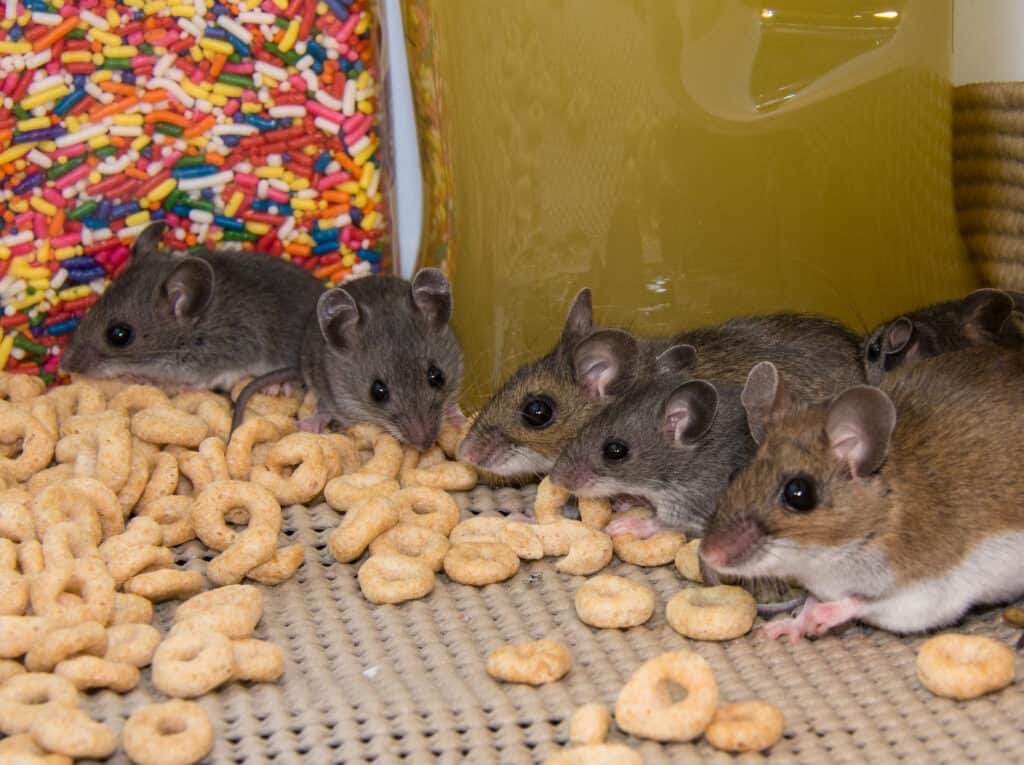
There would be a big mess of food if there is a big infestation.
©Landshark1/Shutterstock.com
Mice invade homes for several reasons, including safety from predators and warmth in the winter. However, they prefer to stay close to human settlements and houses for their food. If you have a stray mouse in your home, you’ll find small signs of gnawing and scratching on your bags of pet food and on soft containers like cereal boxes.
However, if you have a big infestation, you’ll find bags of dog food chewed through overnight, a big mess of food, and lots of droppings around the area. Big messes and lots of missing food mean that you have a big infestation brewing in your home.
Why One Mouse Is Still a Concern
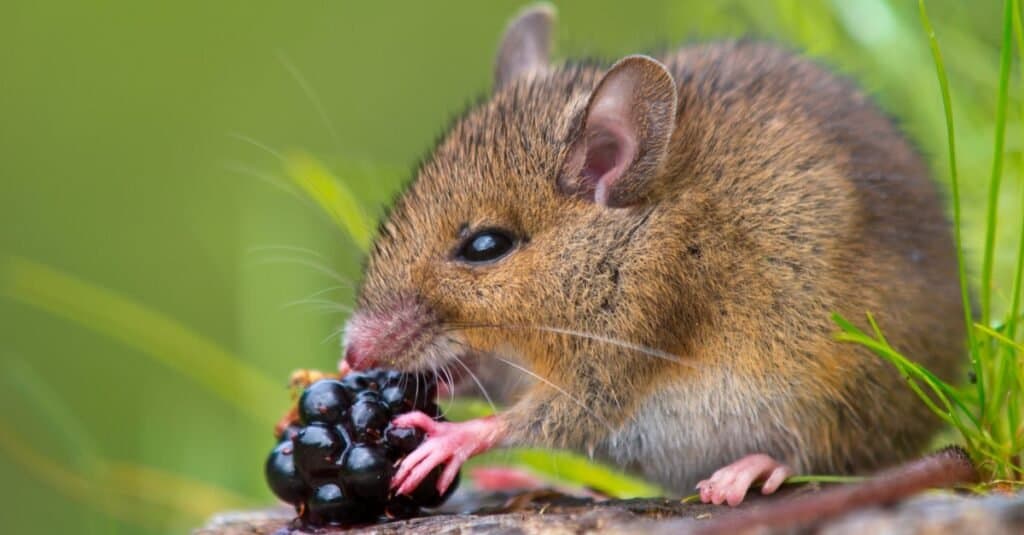
A single mouse can spawn an infestation.
©Rudmer Zwerver/Shutterstock.com
We’ve answered the question, how many mice are in my house? Finding the exact number is difficult. However, you can see if you have an infestation based on factors like the number of droppings, the smell of mice both living and dead, along the presence of nests.
Now, you may be excited to discover that you only have a single mouse in your home, or at least a few. You shouldn’t be, though. A single pregnant mouse can give birth to as many as 8 babies or more after a 3-week gestation period. They can get pregnant basically right after they’ve given birth, too.
While you may think you only have to worry about one mouse, you could be on the cusp of an infestation waiting to happen. Those baby mice become mature in six weeks, and they will be eating your food and getting ready to breed.
It’s best to take a proactive approach to the situation. Make sure that you lay traps, put down poison if possible, and use barrier methods to frighten mice away from your home. The sooner you get rid of mice, the better.
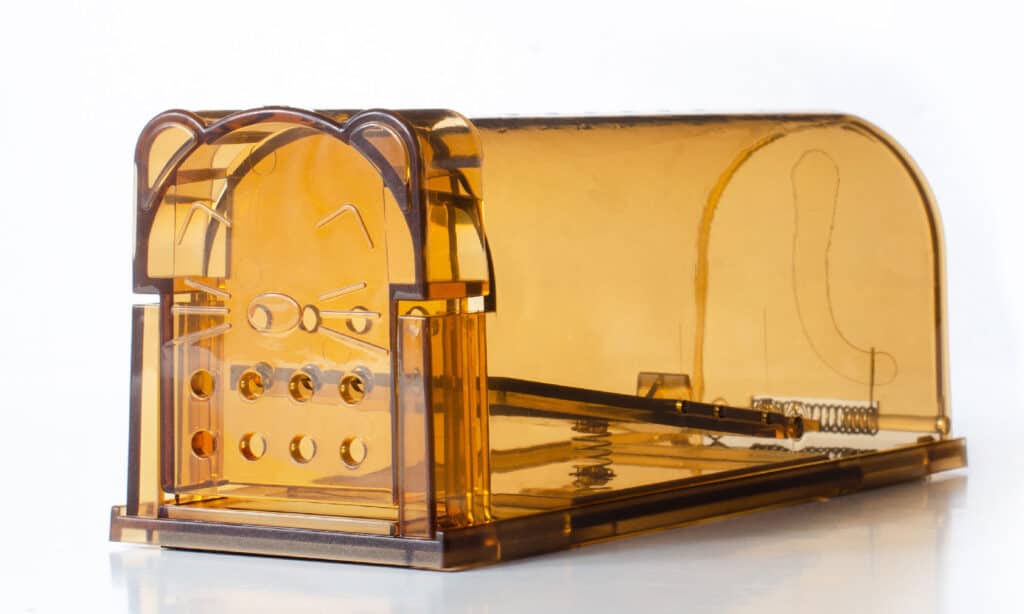
Humane mouse traps are available and best used at the first sign of a mouse in the house.
©PhotoDictionary/Shutterstock.com
Why Are Mice a Problem?
It is not likely that you will be bitten by a mouse, though that would definitely be a health hazard because of the diseases they carry. However, mice can also spread bacteria and viruses, and give you allergic reactions, through their feces, urine, and saliva.
Therefore, mouse droppings and mice nibbling on food in your house are a serious risk. If the dry fecal matter is breathed in, you can catch a disease such as the Hantavirus, which can be fatal. The Hantavirus can survive two to four days in the feces or saliva.
Among the more than 35 diseases that can be contracted through mice infestations are Leptospirosis, lymphocytic choriomeningitis, plague, and typhus, just like with rats. These are serious, life-threatening diseases, so keep the mice out of your house!
The photo featured at the top of this post is © Rudmer Zwerver/Shutterstock.com
Thank you for reading! Have some feedback for us? Contact the AZ Animals editorial team.






